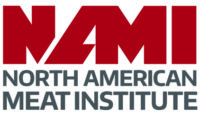NAMI video highlights sustainability in meat production

In food processing, after the animals have been cleaned of the meat sourced for food, a significant percentage of some animals remains. But just what is being done with all these left over parts? The latest Meat Mythcrusher video from the North American Meat Association (NAMI) and the American Meat Science Association tackles this question and how the meat industry is prioritizing sustainability.
In the video, Dale Woerner, associate professor at Colorado State University, addresses the variety of products sourced from livestock in addition to meat, and how those products should be considered when discussing the sustainability of livestock production.
For cattle, on average 44 percent of the animal is not used for food and in pigs 30 percent of the animal goes to other sources, NAMI says. Other animal products include the hides, skins, hair, hoofs, horns, feet, heads, bones, blood, organs, glands and intestines which can be used to make products including leather, medicines, cosmetics, pet food and soaps among many others.
“Rendering certainly adds to the sustainability of our industry in that we repurpose or reuse almost the entire animal for many things,” Woerner says. “We’re able to reduce greenhouse gas emissions and that can be equated to 12 million cars per year off US roadways.”
Woerner adds these additional products are not commonly included in calculations of sustainability often cited in studies.
“Often times in those discussions and the studies that have been conducted, the rendering and recycling of livestock and meat items is not included in those factors, but by utilizing rendering and recycling animal goods we are drastically improving livestock’s long shadow and improving the efficiency and sustainability in our business,” he says.
The newest Meat MythCrusher video is the 45th in the six year old series featuring interviews with meat scientists who bust some of the most common myths surrounding meat and poultry production and processing. Other video topics include myths surrounding meat nutrition, antibiotic use in livestock, “Superbugs” in meat, Meatless Monday, hormone use in animals, ammonia in ground beef, grass-fed beef and more.
Looking for a reprint of this article?
From high-res PDFs to custom plaques, order your copy today!










